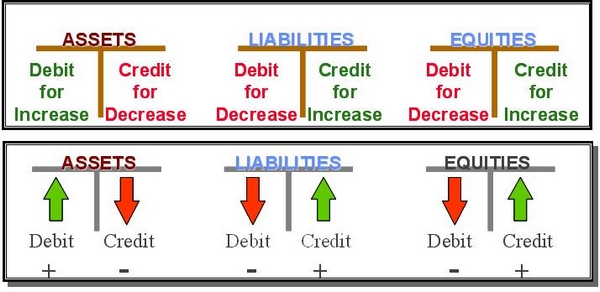
Each account is structured the same way with Debits on the left and Credits on the right.
The words Debit and Credit can have many meanings:
#1 To debit your bank account means to add money in
#2 To use credit could mean that you are placing on a credit card or form credit
However, in accounting it means left (debit) and right (credit). Here is a great resource in the explanation of Debits and Credits.

To determine which side of the account increases and decreases is based on the classification of the account.

 The account balance at the bottom of the T account is the difference between the credits and the debits.
The account balance at the bottom of the T account is the difference between the credits and the debits.
If debit entries are greater than credit entries, the account has a debit balance.
If credit entries are larger than debit entries, the account has a credit balance. At this point, you must assume that credit and debit have no meaning other than left and right.
According to Investopedia.com,
“Debits and credits and the technique of double-entry accounting are credited (no pun intended) to a Franciscan monk by the name of Luca Pacioli. Known as the "Father of Accounting", he warned that you should not go to sleep until your debits equaled your credits.”
Here is a great video of the history of debits and credits:
In order to understand the rules of debit and credits, you have to accept the notion that the words credit and debit have no meaning except for left and right. Think of debit or credit as a convention that relates to the accounting equation. By now the accounting equation should be engraved in your brain:
Assets = Liabilities + Owners’ Equity
Think about this equation as:
Left = Right
Or
Debits = Credits
Whether an account is debited or credited when it increases depends on:
These rules are summarized in the concept of normal balance.
Let’s consider the following situation where a piece of equipment was purchased for cash. Equipment increases by $75 and is debited. Why is it debited? Because equipment has increased, and because equipment is asset; and assets is on the left side of the equation. Therefore an increase in equipment will be debited. Conversely, a decrease in cash, also and asset, will be credited because it is the opposite of the normal balance.
The transaction is illustrated with the following T accounts.

